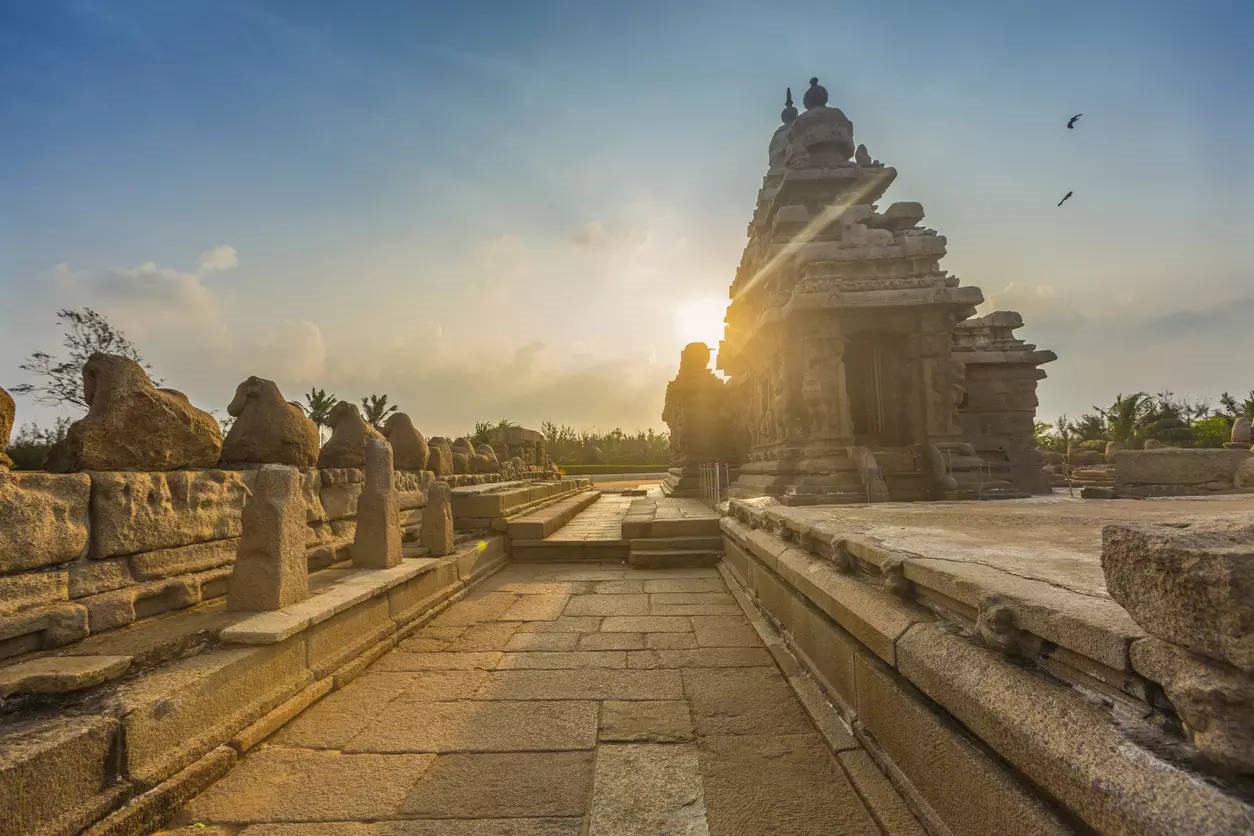Description

Disclaimer: Copyright infringement not intended.
Context
- The historic Shore Temple in Mamallapuram, a UNESCO World Heritage Site, has achieved a significant milestone by becoming India's first Green Energy Archaeological Site.
- This achievement is the result of the Green Heritage Project, a collaborative initiative between the Renault Nissan Technology & Business Centre India (Renault Nissan Tech) and Hand in Hand India (HiH).
Details
- Solar-Powered Illumination: One of the key aspects of the Green Heritage Project is the adoption of clean and sustainable solar power to illuminate the Shore Temple.
- Enhancing Visitor Experience and Sustainability: Beyond solar illumination, the project aims to enhance the overall visitor experience while minimizing the ecological footprint of tourism in the area. This includes:
- Solar-Operated RO Plant
- Water Kiosks
- Empowering the Local Community: The project has created employment opportunities for women from the local community who operate electric buggies.
- Support for Electric Vehicles (EVs)

About the temple
The Shore Temple is a magnificent and historically significant temple located in Mahabalipuram, a coastal town in the southern Indian state of Tamil Nadu. This temple is a UNESCO World Heritage Site and is considered one of the finest examples of ancient Dravidian architecture.
Historical Background:
- Origins: The Shore Temple was built during the reign of the Pallava dynasty in the 7th century AD. It is part of a complex of temples in Mahabalipuram, a major port city during the Pallava dynasty's rule.
- Patronage: The temple was commissioned by Narasimhavarman II, also known as Rajasimha, a prominent Pallava king. It was dedicated to Lord Shiva and served as a prominent pilgrimage site for devotees of the deity.
- Architectural Style: The temple is a prime example of the Dravidian architectural style, characterized by its pyramid-shaped towers (shikharas), intricate carvings, and use of granite stones.
Architectural Features:
- Layout: The Shore Temple consists of two shrines, one facing east and the other west, flanked by a smaller shrine. The main shrine is dedicated to Lord Shiva, while the other is believed to be for Lord Vishnu.
- Monolithic Sculptures: The temple complex features numerous monolithic sculptures, including Nandi (Shiva's sacred bull), lions, and other divine and mythical figures. These sculptures are intricately detailed and have withstood the test of time.
- Five Rathas: Near the Shore Temple, there are five monolithic rock-cut temples known as the Five Rathas (Pancha Rathas). Each of these rathas is carved from a single piece of stone and represents various styles of South Indian temple architecture.
- Bas-Reliefs: The temple also boasts exquisite bas-reliefs that depict scenes from Hindu mythology, such as the descent of the Ganges (Ganga) and the churning of the ocean (Samudra Manthan). These carvings provide insights into ancient Indian culture and beliefs.
Significance and Cultural Impact:
- UNESCO World Heritage Site: The Shore Temple, along with other monuments in Mahabalipuram, was designated as a UNESCO World Heritage Site in 1984, recognizing its cultural and historical significance.
- Spiritual Importance: The temple continues to be a place of worship for Hindus and attracts pilgrims and tourists alike. It is especially popular during the Mahashivaratri festival when devotees gather to seek Lord Shiva's blessings.
.jpg)
Conclusion
Green Heritage Project's success at the Shore Temple in Mamallapuram represents a significant step toward the sustainable preservation of India's rich cultural heritage. It demonstrates the positive impact that innovative green initiatives can have on historical sites and the surrounding communities, while also contributing to broader efforts to reduce carbon emissions and protect the environment.
|
PRACTICE QUESTION
Q. Which of the following architectural features are associated with the Shore Temple?
- It consists of two shrines, one facing east and the other facing west.
- The temple is primarily made of sandstone.
- The Shore Temple has intricate bas-reliefs depicting scenes from Hindu mythology.
Options:
A) 1 and 2
B) 2 and 3
C) 1 and 3
D) 1, 2, and 3
Answer: C
|
















